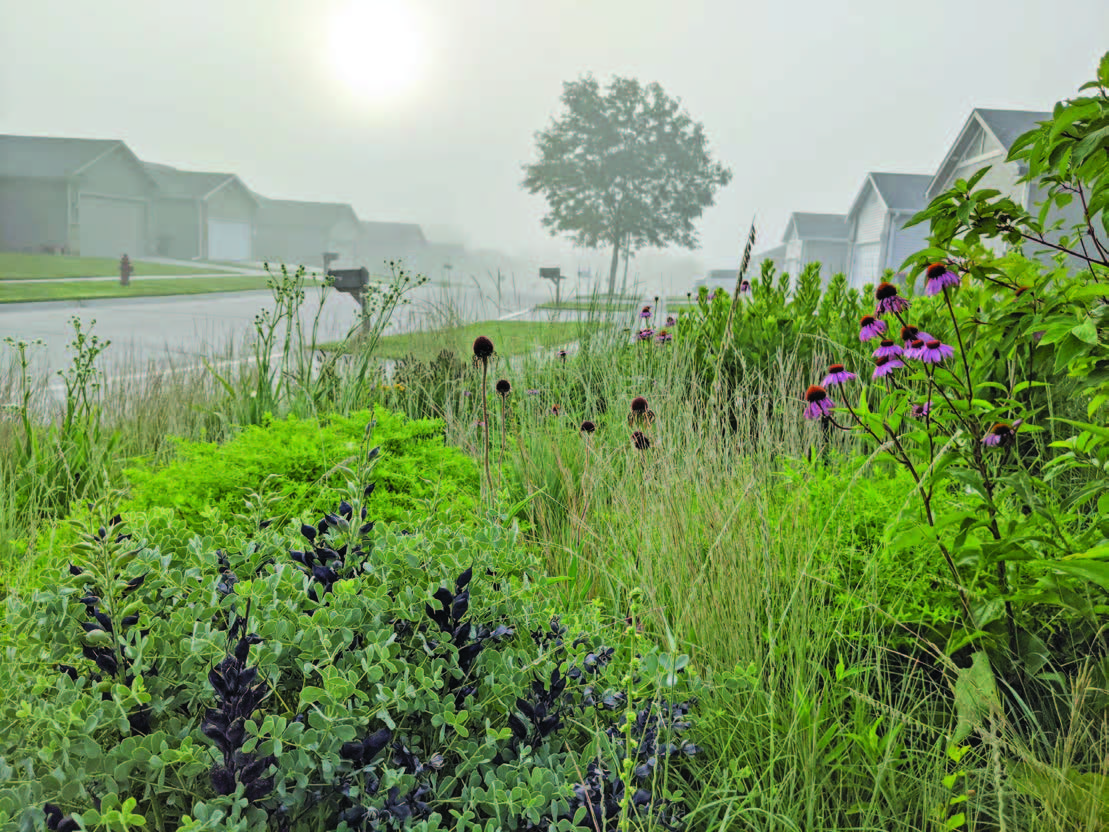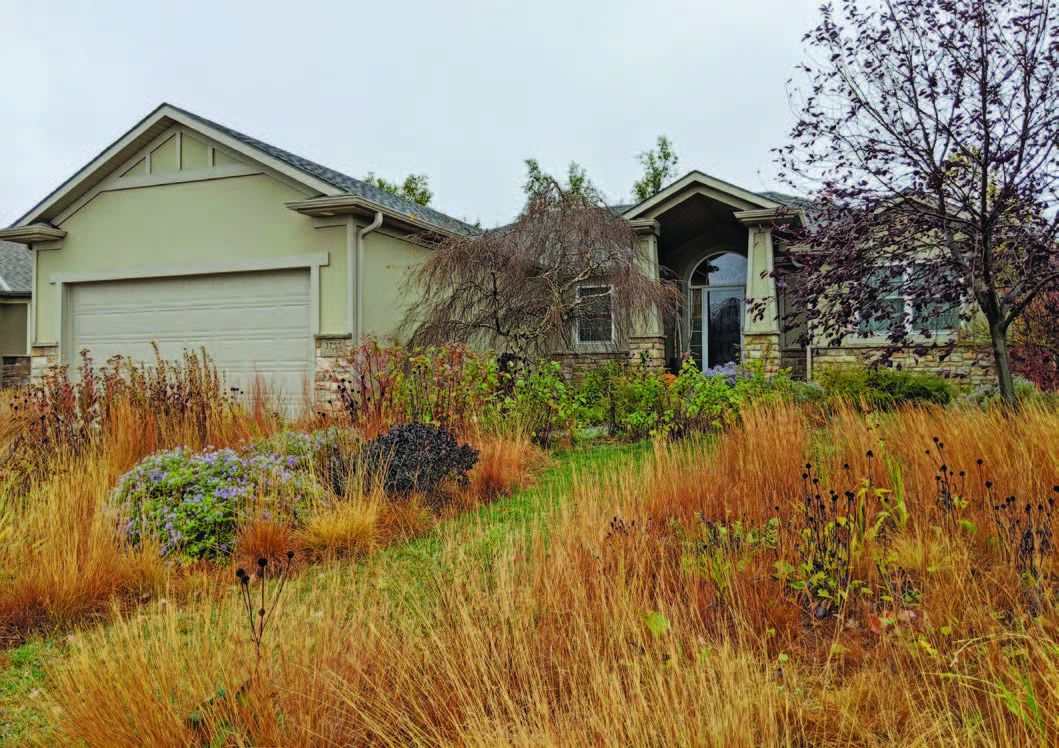A landscape full of native plants revives nature while connecting us more deeply to our place in the natural world. Native plants are generally those that were found before sweeping changes in land use, like farming or suburbs.
Today, prairies, grasslands and other wild places are disappearing, taking with them the diverse communities of life that keep the natural world healthy. From the piedmont and longleaf pine savannas of the southeast, to Nevada’s Great Basin and Palouse geography of the Northwest, natural landscapes are shrinking.
In just the Great Plains region, we’ve lost 99 percent of the tallgrass prairie, 75 percent of the mixed grass and 50 percent of the shortgrass prairies.
Yet much of the wildlife that rely on those spaces still live among us, even in highly altered rural and urban areas. How we manage our gardens and landscapes matters to wildlife.
Many insect species, for example, evolved alongside specific host plants, and those plant species are essential to the insect’s reproduction; just consider monarch butterflies that can only lay eggs on milkweed species, or specialist bees that gather pollen from only one group of flowers during their short bloom time each year.
As climate change creates more weather extremes and shifts that change blooming times, native plants grow ever more important; they provide a lifeline that can help some creatures adapt—or at least hold on a bit longer.

Layers of Benefits
Beyond wildlife support, a native plant garden with thick layers—like we’d see in a prairie or forest—will be far more resilient to stress than one with plants spaced far apart like lamp posts. More plants, and more plants at each layer, means fewer weeds and more consistent soil moisture—which means less work for you.
So consider groundcovers such as wild geranium (Geranium maculatum), purple poppy mallow (Callirhoe involucrata) and even a variety of grass-like plants called sedges (Carex species), which can all replace annual wood mulch applications. We don’t see wood mulch in a meadow, after all.
Then add in taller layers of flowering plants like Golden alexanders (Zizia aurea), coneflowers (Echinacea), mountain mint (Pycnanthemum), tickseed (Coreopsis), blazing star (Liatris), and goldenrod (Solidago) that provide a continuous cycle of blooms through the year.
How we manage our gardens and landscapes matters to wildlife.
During the summer, these native plants clean and cool the air and reduce stormwater runoff. They also build soil; for example, grasses lose up to one-third of their roots every year which naturally amends and aerates soil. But the benefits of native plants certainly don’t end in autumn. In winter, spent flower heads provide seed for ground-dwelling birds, grasses shelter fauna from winter storms and the ground will remain covered with foliage which further reduces erosion.
Of course, to get these benefits you’ll want to leave the garden standing in fall, resisting the urge to clean it up like we do the living room when the kids go to bed. You’ll be amazed at the foliage colors when the low winter sun hits little bluestem, or the architectural forms of rattlesnake master (Eryngium yuccifolium), round-headed bush clover (Lespedeza capitata), stiff goldenrod (Oligoneuron rigidum), black-eyed susan (Rudbeckia hirta), and ironweed varieties (Vernonia).
In the leaf litter (fallen leaves) beneath the plants will be overwintering creatures snug in their hibernation, from spiders and frogs to butterfly caterpillars and even adult butterflies themselves, like mourning cloaks.
In the spring wait for temperatures to remain in the 50s before you cut the garden down, leaving the material in place to provide all of the fertilizer the plants will need. While you’re at it, leave some stems 12 inches tall so a few of our native bees can nest in them (these would be individual, solitary nests,
not hives). Waiting for warmer temperatures gives insects time to wake up and be off on their way.
Remember that these insects, which depend on native plants as hosts, are absolutely essential food for the vast majority of terrestrial birds which must feed insects to their brood. If you care about birds, you must also appreciate the value of native plants.

Thoughts About Landscape Design
For a native garden using nonwoody grasses and flowering plants called forbs, keep a few tips in mind.
- Select an array of species and have at least one plant blooming throughout the growing season—for the pollinators and for lasting beauty.
- Choose the right plants for your garden size and conditions. It doesn’t make much sense to put a drooping, six-foot sunflower next to the sidewalk. And certain plants have preferences for how much sun or moisture they get.
- Learn how each plant spreads. Some stay close together while others move rapidly by roots or seed. Knowing how they reproduce will help you match them to the area and to one another. You won’t want aggressive plants next to well-behaved species.
- Layer the plant beds and plant thickly. Place everything 12 inches apart or closer, no matter what the nursery tag says. For the first year, you want plants to cover the ground ASAP to slow down weeds. Over time, plants will show you what they prefer; be patient and let them teach you.
- Consider using a mix of plants and seed if you’re on a limited budget.
For larger areas or ground cover, don’t overlook grasses and clovers. Putting in a mass of three purple prairie clover (Dalea purpurea) or a drift of twelve nodding onion (Allium cernuum) will help show design intention while being a brighter beacon to pollinators.
In spring or early summer sow some low, warm-season bunchgrasses like sideoats grama, little bluestem (Schizachyrium scoparium), or blue grama (Bouteloua gracilis).
If you care about birds, you must also appreciate the value of native plants.
If you’re sowing a larger space or field, use a diverse seed mix at 100-150 seeds per square foot. If a native plant seed mix from a reputable local grower says the mix will cover 5,000 feet, buy twice as much for the space. Germination rates tend to be only 5 to 10 percent since some seeds will be eaten, washed away, or just aren’t viable.
A bit of design advice to appease suburban neighbors: while you’re planting in masses also keep taller plants in the back of borders or in the middle of island beds. And the best overall advice is to use nothing that gets over three or four feet tall, especially in a front yard.
Consider nice wide paths of gravel, mulch, or lawn, alongside a bench or fountain. A sign that says what you’re doing and why is often helpful.
Finally, it doesn’t hurt to be caught outside taking photos of bees or birds on your plants. You might start up a conversation, or at least be seen leading by example as you appreciate nature and all of the good things plants do for our world.
This article was excerpted from “Outdoor America” 2021 issue #2. Want more articles like this? Join the League and get four issues of our award-winning magazine every year.
Join the Izaak Walton League
Benjamin Vogt is author of A New Garden Ethic: Cultivating Defiant Compassion for an Uncertain Future, and the forthcoming Prairie Up: An Introduction to Natural Garden Design (2022). He owns the Nebraska-based landscape firm Monarch Gardens.
Top photo: A tiger swallowtail and bumblebee enjoy red milkweed (Asclepias incarnata). Photo credits: Benjamin Vogt.